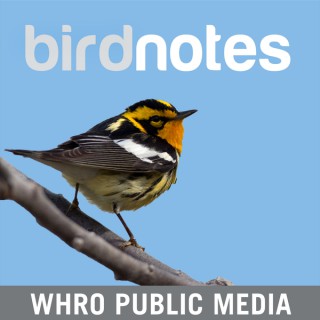Innovation Now
Follow Innovation NowInnovation Now is a daily 90-second radio series and podcast that gives listeners a front row seat to hear compelling stories of revolutionary ideas, emerging technologies and the people behind the concepts that are shaping our future.
- Dec 18, 2025 LATEST EPISODE
- weekdays NEW EPISODES
- 1m AVG DURATION
- 3,682 EPISODES
More podcasts from WHRO
Latest episodes from Innovation Now

NASA work produced a wool filter that is effective at removing particulates in high-moisture environments, making it the perfect choice for medical devices.

After their mission was cancelled in October, the Gemini VI team was assigned a December launch where the capsule would tag-up with Gemini VII, marking the first time two vehicles would rendezvous in space.

Analog missions are conducted to find ways to keep astronauts healthy and mission ready when humans explore the Moon, Mars, and beyond.

For as long as humans have been traveling to space, they have taken their holiday traditions with them.

Four Artemis astronauts could generate more than four thousand pounds of trash in a year. But how do astronauts take out the trash?

A rock-solid performance on the lunar surface makes the Lunar PlanetVac a promising technology for sample collection missions in the future.

When Astronauts Cernan, Evans, and Schmitt climbed into the command module of Apollo 17, they knew it would be the last of the highly successful Moon program. Apollo 18, 19, and 20 had already been cancelled.

Many NASA technologies created for space help make life on our home planet easier.

Not every mission is a success. But every mission is an opportunity to innovate for the future.

Researchers at NASA have found a novel paint-by-numbers method to measure experimental data faster and more accurately than ever before.

Moon mapping could help locate active faults in the lunar South Pole.

Smart technology designed to help rovers and drones is now revolutionizing quality control in food production factories on Earth.

After the most powerful geomagnetic storm of 2025 forced a launch delay, NASA's ESCAPADE is on its way to Mars.

It's Black Hole Friday! Have you made a list of things you should know about one of the universe's biggest mysteries?

The first Thanksgiving in space was celebrated in 1973, when Skylab 4 astronauts marked the occasion by eating two meals for dinner.

Snoopy is a star in Macy's Thanksgiving Day parade, with Beagle Scout Snoopy making an appearance this year. But floating in the parade isn't the only time Snoopy has left the ground.

The largest solar storm in two decades hit Earth in May 2024.

NASA's newest astrophysics observatory added its observations to what we know about an interstellar visitor to our solar system.

Every NASA mission pushes the boundaries of human understanding. But the story doesn't end when the mission concludes.

As of 2024, there are more than forty-five thousand human-made objects orbiting Earth.

The return to Earth is a rough ride for astronauts, from the violent turbulence of atmospheric reentry to a jarring landing.

FINDER can identify survivors in the wake of disaster by sensing the tiny motions of a victim's breathing or heartbeat.

It was November 1967, and NASA was preparing to launch the Saturn V rocket for the very first time.

NASA engineers are strapping-on backpacks loaded with radios, cameras, and antennas to keep explorers connected on the lunar surface.

Euclid, a European Space Agency mission with NASA contributions, has made a surprising discovery in our cosmic backyard.

NASA is proud to salute our veterans. More than twelve percent of the NASA workforce served in the military before coming to work for the civilian space agency.

On the Moon or Mars, astronauts will need to interact with digital data, without looking down at a screen in their hands.

NASA scientists are keeping an eye on astronauts while looking for countermeasures to safeguard the eyesight of future explorers.

From supernovae to massive black holes, the James Webb Telescope is playing a unique and profound role in transforming our understanding of astrophysics.

This company is putting a spin on NASA technology that brings cars to a stop.

Dragonfly has moved far beyond a concept on a computer screen.

NASA and its international partners have surpassed twenty-five years of continuous human presence aboard the International Space Station.

A new sonification technique changes the haunting tune this black hole is playing.

For this year's class of astronaut candidates, the tough job has just begun.

At age seventy-seven, John Glenn became the oldest person to enter Earth orbit, and the only person to fly in both the Mercury and Space Shuttle programs.

Thanks to a robust design with redundant systems, NASA's Psyche spacecraft remains on track for an on-time arrival in August 2029 at its target asteroid.

As NASA prepares to head to the Moon and Mars, understanding the human immune system is critical to astronaut safety.

Through careful land management and conservation efforts, NASA protects horseshoe crabs and their habitats at Earth's premiere spaceport.

The similarity between a gel diffusion system to create crystals for semiconductors and the way crystals form in teeth and bones led to the development of a spinoff toothpaste that restores teeth.

The brightness of planets and stars is measured in terms of apparent magnitude, or how bright they appear from Earth.

















